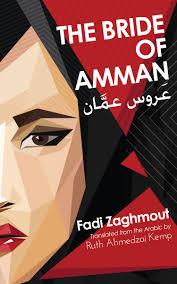Includes: Insight from the Jordanian Author
It was still early days for blogging in 2006 but the then 28-year-old Jordanian Fadi Zaghmout decided to experiment with the new world of online publication and with that also the possibility of freely sharing ideas without censorship. At first not revealing his true identity, Zaghmout’s goal was to explore what it meant for him to be an ‘Arab’ beyond stereotypes and also what it would entail for him to be the self-designated ‘Observer’ of his society and culture.
‘The Arab Observer’ blog was thus born on 7 March, 20006, when the first post titled ‘Driving Home’ was written in English, which made it slightly more accessible to the liberal-leaning youth of Zaghmout’s hometown of West Amman, Jordan; and, by extension, other Arabs of a similar educational, economic and social background placed across the Middle East and North Africa (MENA) region and also outside of it.
His musings developed organically into an anthropological examining of the norms and behaviours of the 20s-to-30s age group and finding out their individual and common struggles. He said: “At the beginning I wasn’t sure how people would perceive the content I wanted to publish; but, a few months down the line, I wanted more readers for my blog, so I started promoting it amongst my friends and then building relations with other bloggers and attending bloggers meetings and becoming more visible.
“I also realised that when addressing the particular issues of body rights and sexual freedoms in Jordan, that the magazines and newspapers published in English were always better articulated than those in the Arabic. I thought this content needs to be in our language; and, thus, I chose to post in Arabic and found out that I can actually express myself even better!”
Conveying Real Experience Into Story Form
Soon Zaghmout’s artistic energy flowed into how best to convey what he was encountering in real life and the incredible stories that were showing up and pointing towards a very high emotional cost being endured by the Arab youngsters. Even doing their best to conform to a social, cultural and religious model that neither allowed for the expression of autonomous body rights nor accepted the concept of alternative sexual orientation, many of them continued to suffer in silence.
Realising the best way would be to put it in story form, he created the first of the fictional characters that would become altogether the five subjects in his first book, ‘The Bride of Amman’. Through them, he has indeed been able to bravely and courageously approach many of the taboo subjects that are not easy to talk about within modern or current Arabic public discourse.
Highly controversial when it was published in Arabic in 2012, the novel has recently been wonderfully translated into English by Ruth Ahmedzai Kemp in order to extend its readership potential and go global. Just this past month of November, 2015 Zaghmout and Kemp undertook their successful United Kingdom launch tour where I was fortunate to meet them in London and get a signed copy.
In terms of now having the book in both languages, Zaghmout said: “I wrote the book in Arabic to address a Jordanian audience in specific and an Arabic audience in general. I wanted it to be a shout, a wake up call and a book that calls things as they are; and, hopefully, to help others going though such hard times as of the characters in the book.
“Whereas for the English translation, meant to bring in a foreign audience, it should be a reminder of the importance of feminism since many Westerners take gender equality issues for granted, unaware of how easy it is to slip down the patriarchy path.”
What ‘The Bride of Amman’ offers is an artistic voice – that sounds almost sweet, naïve and innocent in some of its passages – to the major dilemma faced by many Arab youth across the MENA world. It is the question of how – and whether or not it is even possible – to begin to criticise from within the strict rules imposed when it comes to the forming of any type of adult relationship. It does seem also that those who suffer the most are invariably the girls rather than the boys, but still including the latter.
Even though the tale is firmly set in the internet age with easy access to the knowledge and experience of different ways of social constructs, the pressure to obey the only one acceptable option of a relationship – that of the heterosexual marriage between two people of the exact same religion – is real and with it also the threat of social ostracism should one dare to push the boundaries or to challenge the status quo.
Through the lives of Hayat, Ali, Leila, Salma and Rana, we witness the heavy burdens of shame, fear, guilt, paranoia and stigma that are forced upon them and that lead to the compromise of their significant life decisions and all for the dire sake of fitting in. Grappling with how to circumvent the impossible ideals of a rigid patriarchy that is obsessed with the concepts of family honour, the imperative of virginity before marriage and even as to the religious confusion when it comes to different sexual orientations, it can seem that there is no happy way out.
How Fiction Transforms Into Social Activism
Sadly there are some tragic outcomes of a suicide and also of one of the girls who doesn’t get any justice whatsoever for being sexually abused by a close male relative. Zaghmout explained: “These are very important questions. The suicide scene is meant to shock the reader and raise discussion outside the book. Hayat and Layla’s ending were also meant to portray real stories that show the extent of injustice that some women endure because of cultural and social factors.”
Genuinely akin to a feminist piece of literature, the book reveals the stark inequalities towards the female gender, the lowly expectations regarding their future – where success is measured by when they become a wife or a mother – and the obvious lack of sexual freedom or ‘body rights’. But Zaghmout goes further and opens the lid onto a subject which is even more controversial, that of the unfair discrimination against and the misunderstandings towards homosexuality in the Arab world and the broader subject of LGBT rights.
Zaghmout, who now considers himself a ‘social activist’ and can boast around 370,000 Twitter followers, said: “I have been addressing these issues mainly through my writings. I believe that we are in severe need for liberal voices in the Arab world that are not afraid of talking about body and sexual rights. These voices have been marginalised and suppressed for a long time and we need more and more people to speak up so that social change can take place.”
He offers ideas that might lead to reform: “I think it is about education in schools, through literature and media. There is currently no sex education in Arab schools and people still don’t understand the difference between gender as a social construct and sex as biologically defined. There is ignorance of gender identity, sexual orientation, gender expression and sexual practices. What we have now is a rigid two templates that we want to fit all men and women in.”
Highlighting the LGBT Community in Amman
I had to ask Zaghmout about Ali, the gay character in the ‘The Bride of Amman’, who feels very confused and troubled about his innate desire for men; and, also, if he could tell me a bit about the situation for the LGBT community in Amman. He said: “There is a growing LGBT community in Jordan and many young members are becoming more courageous about coming out to their parents and friends, yet it is still dangerous to be publicly out.
“There are no laws that protect the community from any potential abuse or discrimination that is gender based. In a way the community is more mature now than years before as they are more confident and accepting of their own sexuality; but, on the other hand, there are many people who live in denial and who reject their sexuality and are still struggling to come to terms with it.
“It is usually those who don’t follow the expected gender expression in public who are subjected to rejection, such as the effeminate gay men or masculine lesbian women or members of the transsexual community. Risk can vary from potential beating and harassment in the street, to family abuse and in rare cases killings.”
As to whether or not Zaghmout himself has received any serious threats or reproach for being so outspoken, he said: “I always got negative comments on the blog and sometimes direct personal attacks, but my strategy was to not respond in kind. There was always some other reader who would step up and defend me.
“With the book, I have received so much support since its release and I have been interviewed by many different magazines and appeared on TV stations to talk about it. The only bad experience was within a local book club in Jordan, where the discussion got very heated and people became aggressive in their approach. I think the book provoked them, but that is understandable”.
This leaves one big question up for debate: Now that we can and have talked about the issues, how long and what more will it take to see a real shift in the popular Arab attitudes towards women’s rights in particular; but, also, towards the rights of everyone else to experience their sexuality without any more cultural, religious or socially imposed punishment or stigma? And what would be the necessary next step to begin such a transformation?
Zaghmout is optimistic: “There is a movement of young feminist activists that is growing all over the Arab world. It started a few years ago and needs time to mature. We still need more feminist voices in the media, in literature, and in politics. Social change doesn’t happen overnight, but we can perhaps witness its fruits in less than a decade’s time.”
You can purchase ‘The Bride of Amman’ by Fadi Zaghmout in both Arabic and English as an e-book or paperback at: https://www.amazon.co.uk/
‘The Arab Observer’ blog is still active and you can read it at: https://thearabobserver.wordpress.com/
Note: This article was first published circa December 2015


